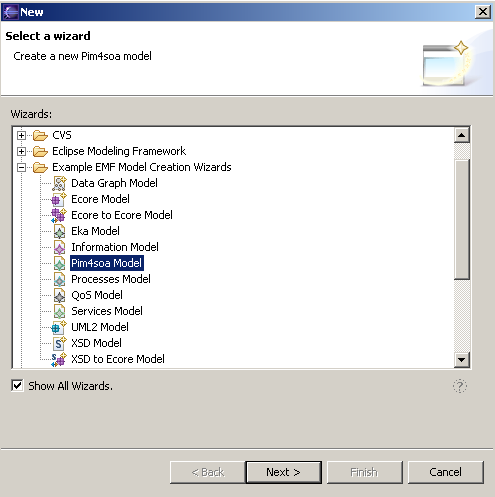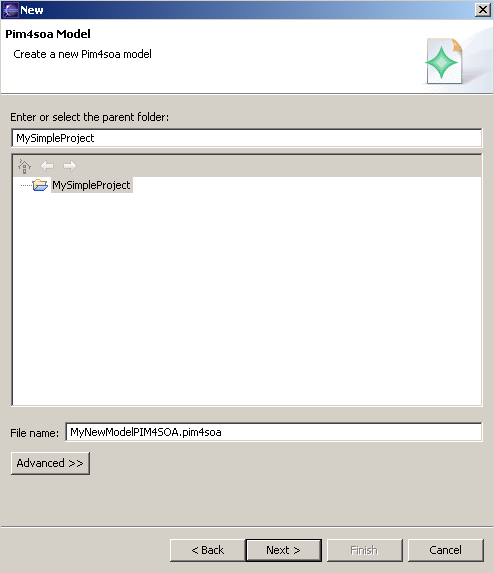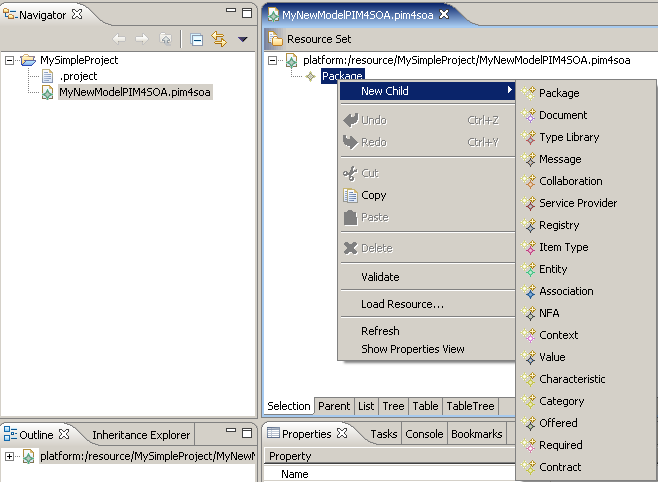PIM4SOA metamodel
Description
The PIM4SOA metamodel defines an abstract language to specify executable business processes that execute within an enterprise and may collaborate between otherwise independent business processes executing in different business units or enterprises.
The main objective of the specification is:
- The ability to exchange business process specifications between modelling tools, and between tools and execution environments.
PIM4SOA is closely aligned and has been based on the Business Process Definition Metamodel that is in the process of standardization by OMG. However as the standardization did not completed in the timeframe of Athena the PIM4SOA metamodel was developed as a simplified version.
The PIM for SOA metamodel covers four important aspects: service, process, information and quality of service.
- Information: in the context of virtual enterprises information represents one of the most important elements that need to be described. In fact the other aspects manage or are based on information elements.
- Service: our main intention is to be able to describe SOA independently from the technology used. Service represents business accessible functionality.
- Process: processes describe a set of interactions amongst services in terms of messages exchange.
- QoS a suitable feature is the description and the modelling of non-functional aspects related with the services described.
Datasheet
| Name of result | PIM4SOA metamodel |
| Contact | Xabier Larrucea |
| Contributors | ESI, SINTEF |
| Relationships to other projects | A1, A2, A5 |
| Result type | Metamodel |
| Software deployment | Sources included |
| Publicly available | Object files available |
| Status | Prototype |
| Summary of functionality | In order to reduce the gap between enterprise models and the service oriented implementations, we have applied a model driven architecture approach to enterprise architectures in the implementation of the PIM for SOA (PIM4SOA). The PIM4SOA identifies four aspects where specific concerns can be addressed:
|
| Benefits and contributions to interoperability | Basically the PIM4SOA allows the definition of SOA models independently from the technology used. In addition it allows to share SOA models and to bridge the gap between enterprise models and ICT implementations. |
| Validation and demonstration activitities | The eprocurement scenario has been used to validate this approach. |
| Standardisation links | This metamodel is based on:
|
| Requirements and dependencies | This plugin is developed for Eclipse development framework. |
| Comments |
Installation guide
The PIM4SOA has been implemented as a plugin for its use in the Eclipse platform. Other ATHENA tools need to have installed this plugin.
Requirements
External dependencies:
- The Eclipse platform (version 3.1) downloadable from: http://www.eclipse.org/downloads
Update manager site
Follow the instructions described here.
User guide
Having installed this plugin, users can edit PIM4SOA models. This plugin provides a basic EMF (Eclipse Modelling Framework) editor to instantiate PIM4SOA models. The following steps steer users to create a PIM4SOA model:
- Create a new empty project in the Eclipse workspace File->New->Project->SimpleProject

- Create a PIM model File->New->Other and then check “Show all wizards”
- And then select Example EMF Model Creation Wizard -> Pim4soa model as it is shown in the picture below

- Assign the new PIM4SOA model to the SimpleProject created previously.

- Create the root for the PIM4SOA model (package).

- Users can now edit correctly a PIM4SOA model as its show in the next picture



